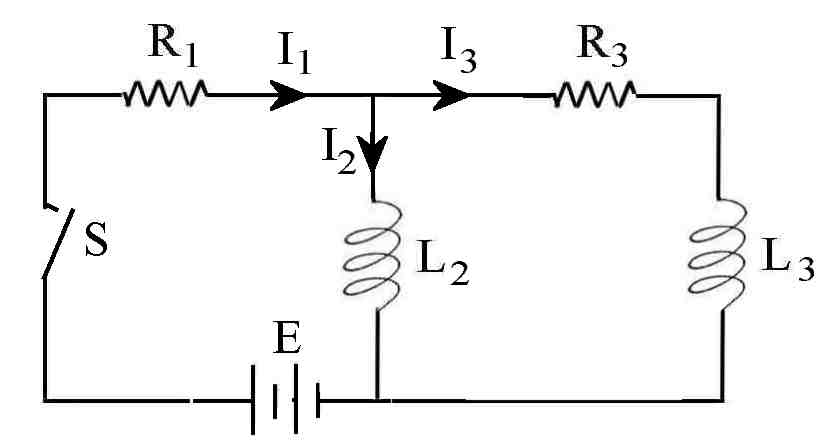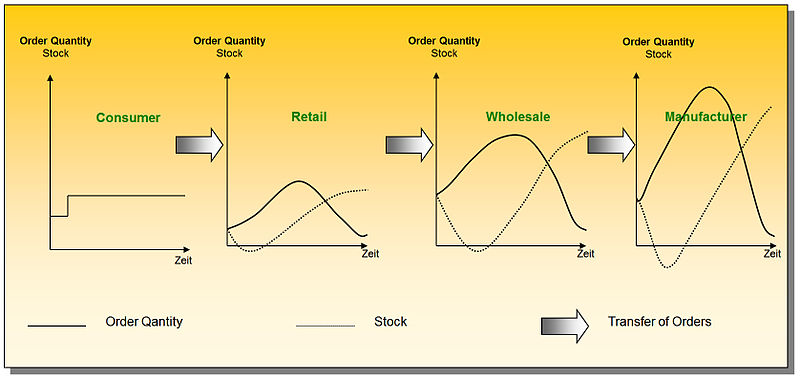System Dynamics
Guest post by Andrew Boyd
Today, the sum of the parts. The University of Houston presents this series about the machines that make our civilization run, and the people whose ingenuity created them.
Most of us have played the game telephone at one time or another. The game's leader whispers a phrase to the first person in a line of players. Each player in turn whispers the phrase to the next player in line. When the last player hears the phrase, she shares it out loud. Of course, the final phrase is rarely the same as the original. The differences are normally startling, and humorous. Yet while the end result is often funny, there's also a lesson: a lesson businesses have learned all too well in recent decades.

The telephone game. Photo Credit: Flickr/John Nakamura Remy
The car maker Volvo learned the hard way. Green cars weren't selling well, so the marketing department ran a special promotion. It worked, and the sale of green cars showed a sharp uptick. Problem was, no one told manufacturing about the promotion. When production managers saw the increase in sales it was assumed green cars were highly coveted. So they increased the production of green cars.

Green Volvo S60R. Photo Credit: Flickr/ John Hritz
Producing cars, or pretty much anything, is a lot like a game of telephone. Procurement. Manufacturing. Distribution. Sales. These are the players standing in line. In fact, the business game is really far more complicated, with interwoven communications across many players.
Organizational problems like those faced by Volvo really surfaced following the Second World War, when engineer Jay Forrester championed what came to be known as system dynamics. System dynamics isn't about how organizations communicate, but how seemingly sensible decisions in one part of an organization can lead to organizational mishaps. Forrester's work wasn't just observational, but based on his education as an electrical engineer. Organizations, he reasoned, work a lot like electrical circuits. Feedback loops, or lack thereof, can have unintended consequences.

Simple diagram of rcl electric circuit. Photo Credit: Wikimedia Commons
Today, the concepts underlying system dynamics are commonly taught in business schools. Students learn the math, but they also get hands-on experience. One popular classroom activity is the beer game. Just as in the game of telephone, players form a line, in this case representing the different steps in making and selling beer. But instead of a one-way whisper, players take orders on their right and place orders on their left. Lead times and variable demand complicate things. Even with everyone doing their best and relatively smooth demand for beer, orders swing wildly up and down. It's a case of what's known as the bullwhip effect -- a kind of butterfly effect faced by businesses.

Example of a Board Design for the Beer Distribution Game. Photo Credit: Wikimedia Commons

Visualization of Bullwhip effect. Photo Credit: Wikimedia Commons
Another game is Friday Night at the ER, where participants play different roles in managing a busy emergency room. Like the beer game, players learn how a seemingly good decision in one area can lead to disaster for the ER as a whole.
In each case the answer is to understand the system, not just the pieces. That's where the math of system dynamics comes in. Still, it doesn't take a degree in engineering to know that good communication goes a long way toward heading off problems.
I'm Andy Boyd at the University of Houston, where we're interested in the way inventive minds work.
(Theme music)
Beer Distribution Game. From the Wikipedia website: http://www.beergame.org/the-game. Accessed January 26, 2016.
Bullwhip Effect. From the Wikipedia website: https://en.wikipedia.org/wiki/Bullwhip_effect. Accessed January 26, 2016.
Chain Reaction. The Economist, January 31, 2002. See also: http://www.economist.com/node/949105. Accessed January 26, 2016.
Friday night at the ER. From the Wikipedia website: https://en.wikipedia.org/wiki/Friday_Night_at_the_ER. Accessed January 26, 2016.
This episode was first aired on January 28, 2016